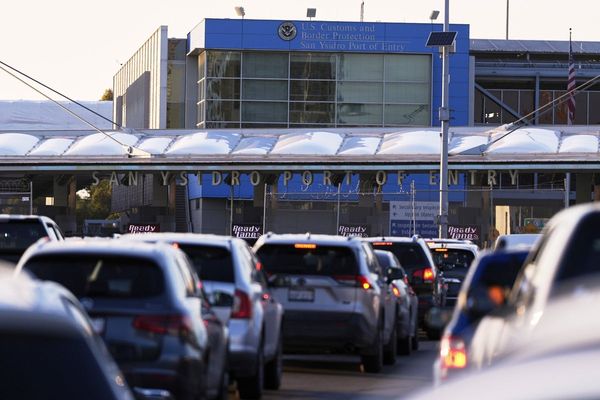An imminent update to the Highway Code will affect all road users, from drivers to cyclists.
The new road rules will come into force tomorrow (January 29) and will see 50 changes across nine different sections.
They are being introduced in a bid to protect cyclists, pedestrians and horse riders when they are using or are in close proximity to UK roads. They also aim to make the roads safer for vulnerable users by creating a hierarchy.
In 2020 alone, an increased number of accidents and collisions were recorded with a total of 141 cyclists having been killed and a staggering 4,215 injured.
In addition, there were 1,460 fatal road accidents involving pedestrians whilst 80% of 1,010 horse incidents were caused by cars.
Keith Hawes, Director of Nationwide Vehicle Contracts commented on the upcoming changes and said: "The new highway code changes are essential to the safety of all road users and pedestrians. As many of the rules in The Highway Code are legal requirements, it is important that all motorists keep up-to-date with the changes. Disobeying the rules can be a criminal offence which can lead to points on your licence, fines, driving bans and in the worst-case scenario, imprisonment.
"The new rules that are being introduced this month highlight the need to be more cautious on the roads, taking other road users into consideration, in particular the more vulnerable motorists.

"The new driving laws do mean learner drivers will have new information to remember. However, these rules are valuable and have been put in place to help to protect drivers such as learners, who have first-hand experience of being a ‘vulnerable’ road user whilst they gain confidence on the roads."
With this in mind, the Experts at Nationwide Vehicle Contracts have compiled the eight key changes being introduced this Saturday and what they mean for road users.
1. The new road user hierarchy
To ensure the safety of vulnerable road users, a new hierarchy will be implemented to protect them and reduce the number of collisions on UK roads.
The new hierarchy is as follows:
Pedestrians
Cyclists
Horse Riders
Motorcyclists
Cars/taxis
Vans, minibuses, large passenger vehicles or courier vehicles e.g HGVs & buses
2. Give way to pedestrians waiting at junctions
When pedestrians are crossing a road or junction, motorists should now give way to them - even if the pedestrian hasn't started crossing the road, meaning drivers should give way to those who are waiting.
When approaching a zebra crossing, motorists, cyclists and those riding motorcycles should give way to pedestrians at the crossing.
At a parallel crossing motorists should give way to cyclists and pedestrians.
3. New guidance on shared spaces between pedestrians, horse riders and cyclists
People who are riding a horse, walking or driving a horse-drawn vehicle, should be aware of their surroundings and the safety of pedestrians.
People who are cycling are asked to not pass pedestrians and horse riders at a fast speed or at close proximity. They are also asked to slow down when necessary and make people aware of their presence by ringing their bell whilst keeping in mind that people may be deaf or partially sighted.
New rules also mean cyclists should not pass on the left-hand side of a horse.
4. New rules for cyclists and their road positioning
Cyclists must now ride in the centre of their lane whilst on quiet roads with slower-moving traffic, and also when approaching junctions or road narrowings.
Whilst cycling on roads, bike riders now must keep at least 0.5 metres from the kerb edge on busy roads where vehicles are moving faster than them. When cycling past parked vehicles, cyclists should keep a one-metre distance and be aware of people walking into their path.
For cyclists who are cycling in groups, they can now cycle two abreast as it can be safer when cycling in larger groups and with less experienced riders.
They must allow cars to overtake them when it is safe to do so.
5. Safer overtaking when driving
When driving a vehicle, you may now cross a double white line if necessary and the road is clear to overtake a cyclist or horse if they are travelling at 10mph or less.
When overtaking cyclists, a minimum of 1.5 metres must be left between the vehicle and cyclist going up to 30mph to give them more space.
When passing horses, motorists must leave at least two metres of space. If motorists are driving by pedestrians walking on the road (no pavement), two metres should be left between the pedestrian and vehicle and speed should be dropped.
6. Cyclists priority near junctions
Cyclists are encouraged to use the small cycle traffic lights to make their journey safer. If cycling on roads that do not have this facility, it is recommended that cyclists proceed as though they are driving a vehicle, therefore should make themselves as visible as possible and avoid being overtaken where they deem it to be dangerous.
Additionally at a junction cyclists now have the right of way if going straight.
7. Priority when at roundabouts
When at a roundabout, those driving a vehicle or motorcycle should not attempt to overtake people cycling within their lane, and should also allow cyclists to move across the roundabout when travelling around.
8. Charging, parking and leaving vehicle changes
'Dutch Reach' is the new technique being implemented when opening doors.
This means that drivers and passengers should now open their car doors using the hand opposite to the side to the door they are opening - for example, using your right hand to open a door on the left-hand side of the vehicle.
This is so when opening the door the person is looking at their shoulder, making them less likely to cause injury to cyclists, motorcyclists and people on the pavement.
When electric vehicle owners are charging their cars, they should park close to the charge point to stop pedestrians from tripping over cables.
If doing this, they should also display a warning sign if possible and return charging cables to reduce danger and obstacles to other people.







